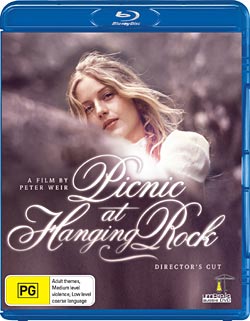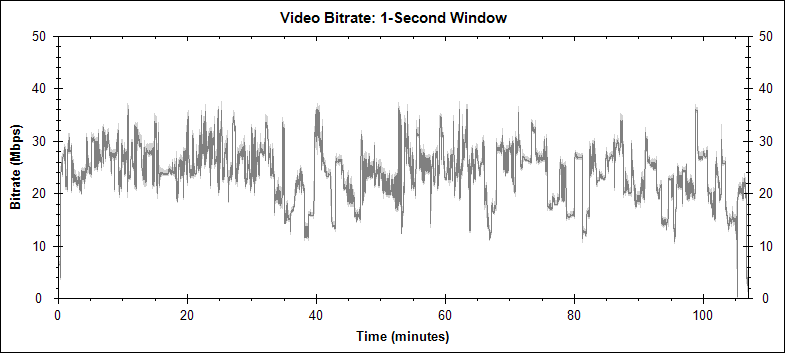 Picture:
Picture:  Sound:
Sound:  Extras:
Extras: 

Download scan of review (JPEG, right click, Save As)
Movie:  Picture:
Picture:  Sound:
Sound:  Extras:
Extras: 
And it was without a doubt the most amateurish piece of junk that I've seen for many a year. Truly awful acting, poor cinematography, and the clunkiest of editing. Aside from the subject matter it looked like a bunch of teens had been learning on the job. Not very well.
So I wasn't kindly disposed towards Australian movies from the mid-70s when I returned to watch Picnic at Hanging Rock for the first time in many years. I had fond memories of it, but I have had many disappointments with other movies I once enjoyed.
Well, after 37 years Picnic shows why Peter Weir went on to a successful career as an international director of quality movies (Gallipoli, Witness, Dead Poets' Society, The Truman Show, Master and Commander). It was beautifully made, establishing its ethereal tone of suggestive happenings with confidence and professionalism.
The story concerns the disappearance of several school girls and a teacher in 1900 in rural Victoria. And the aftermath thereof. I will confess that I've always had the vague impression that this movie was loosely based on real events. It turns out to be based on a novel written in the 1960s. The author allowed the impression to be taken that it was based on facts, but there are no contemporaneous records that in any way support this.
So it's fiction, and fine fiction at that. Keep an eye out for the young John Jarratt. Thirty years later he gets to be a serial killer in Wolf Creek.
But do beware: this is the Director's Cut of the movie. It's some eight minutes shorter than the original release. The cuts are hashed over in a detailed 2004 documentary included on the disc. Director Peter Weir says that this version is what he wanted in the first place (but doesn't say why he didn't do it this way in the first place). Anna-Louise Lambert -- who played Miranda in the movie -- points out that he removed a couple of moments of emotional release that she believes belong to the viewers.
Oh well. If there's stuff towards the end that you remember but seems to be missing, yes it really did used to be there. It's a pity that the seamless branching capabilities of Blu-ray couldn't have been used to present both versions.
The picture was, in summary, simply glorious. In summary, because there were definitely imperfections. Specifically, there was a bit of picture noise in the form of flecks and dots. More so at the start during the titles where there was clear evidence of the overlay panels. More significantly, there was some picture instability, as the content moved slightly within the frame, little frame wobbles with no apparent cause. There are a couple of marked ones around the time the girls are wandering through the rocks.
But all that pales into insignificance because of the superb focus and clarity, and the magnificent colour. I doubt that you will see the Australian bush filmed so beautifully in many other movies. All this is all the more important because of the many gorgeous shots, particularly one of the group of girls after lunch, composed as though in a Tom Roberts painting.
I was worried about the sound, but for the most part it was good to excellent. Remixed for surround sound it is not aggressively immersive, but subtly draws you in. The famous theme, hesitant and pure and performed by Gheorghe Zamfir on the pan flute is presented with great clarity, sounding like a modern recording.
The only jarring note, so to speak, was some of the dialogue in outdoors shots -- not all, but some -- which were clearly recorded in post production and plastered onto the soundtrack without proper level matching or adjustment for ambience.
 (Australian rating); Region free
(Australian rating); Region free
The following video bitrate graph was generated by BDInfo 0.5.8:
